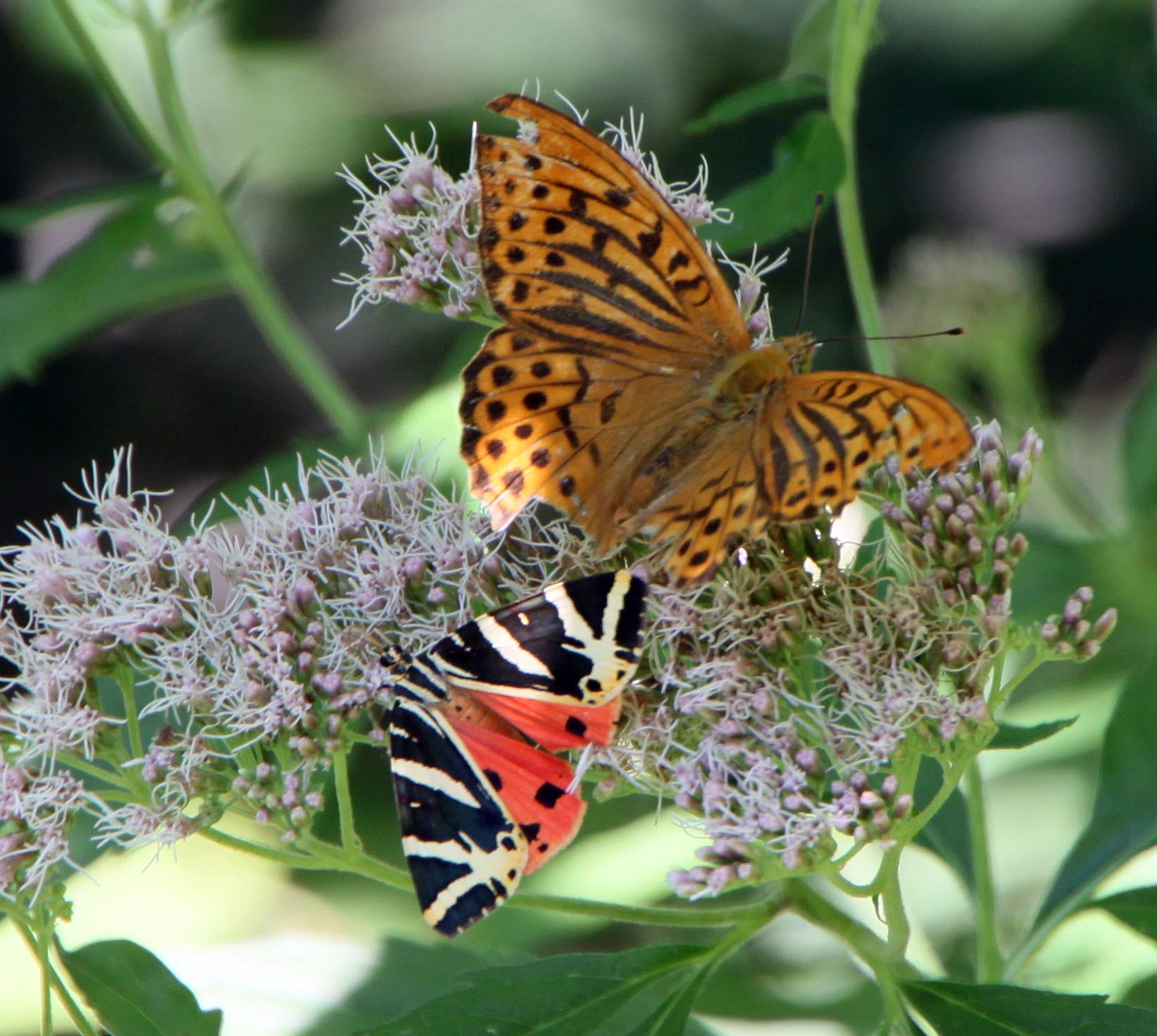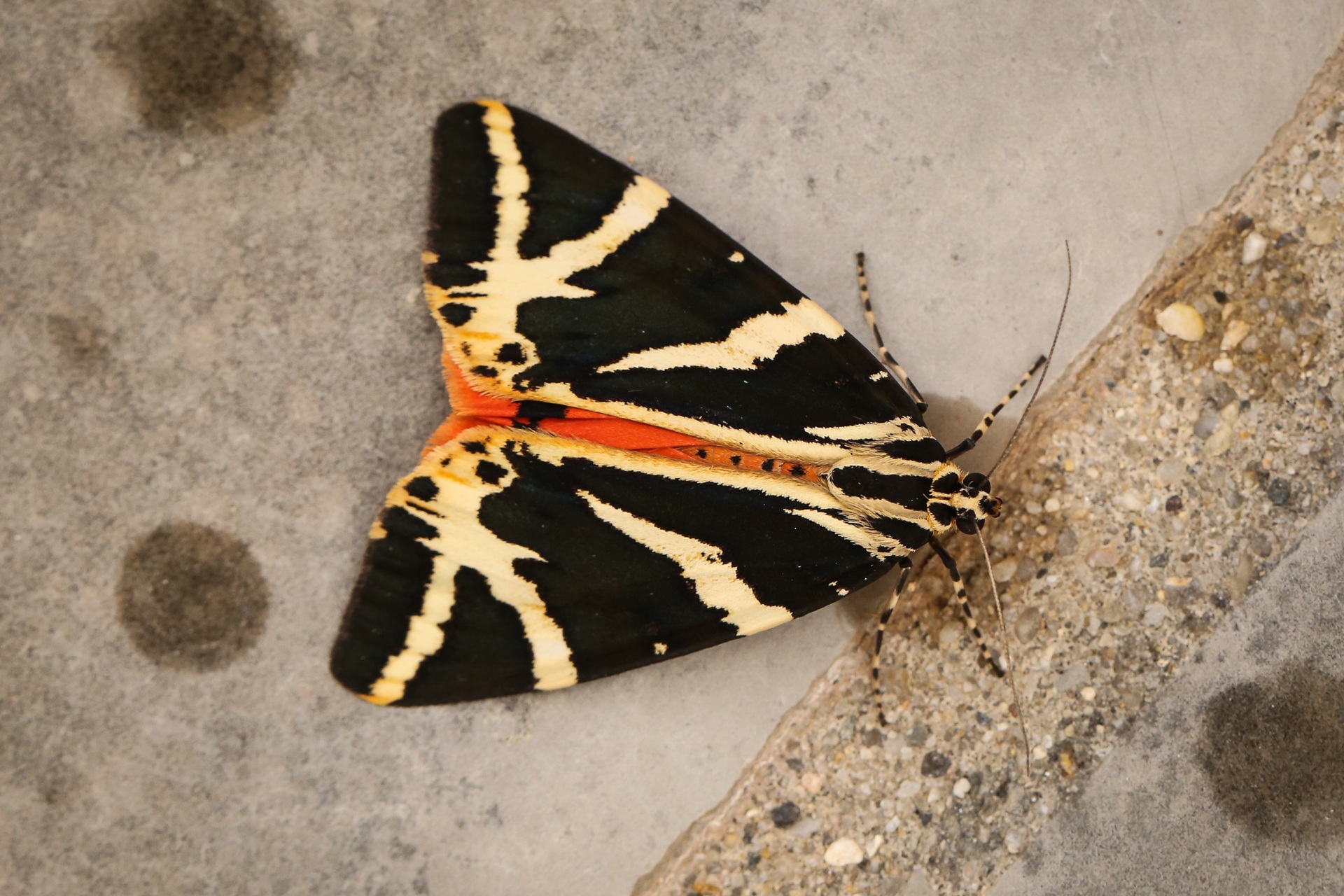Euplagia quadripunctaria
(Poda, 1761)
-
 Subfamily: Arctiinae, Arctiini, Callimorphina
Subfamily: Arctiinae, Arctiini, Callimorphina -
 Wingspan: 52-65 mm
Wingspan: 52-65 mm -
 Flight period: Jul - Sep
Flight period: Jul - Sep -
 Spread: Common
Spread: Common -
 Host plants: Polyphagous
Host plants: Polyphagous
Information
The Euplagia quadripunctaria also called Jersey Tiger is a moth of the Erebidae family, subfamily Arctiinae, with a wingspan of 52 - 65 mm.
Euplagia quadripunctaria is widely distributed in Europe from Estonia and Latvia from the north to the Mediterranean coasts and islands in the south. *
It is absent from the Scandinavian peninsula and from Ireland. In Italy it is present in Sicily, but not in Sardinia. **
It is also found in Western Russia, the Southern Urals, Asia Minor, Rhodes and neighboring islands, the Near East, the Caucasus, Southern Turkmenistan, and Iran. ***
The front wings are blackish / bluish in color with three large oblique white lines that start from the costa towards the inner corner,
three other smaller lines follow the same path. The outermost of the three large white lines is parallel to the outer margin and joins the
second white line in proximity from the inner corner.
The hind wings are normally red even if the color with the passage of time can sometimes become orange or golden yellow,
they are marked by four large black spots and a short black band that affects the post-marginal area.
The thorax is formed by black and white bands, the abdomen is red or orange with a dorsal dorsal black point on each segment.
The caterpillar is black with a yellow-orange band positioned centrally on the back for the entire length, laterally white spots are visible on each segment.
Orange tubercles with small black spots are clearly visible, from which white and blacks hairs emerge.
The pupa is squat with a brownish red color. ****
Common species and it is easy to meet it in the second half of summer along wet paths in broad-leaved woods, on shady banks and in rocky ravines, even in large numbers.
He loves sucking the nectar of different essences with a preference for Eupatorium cannabinum . It overwinters at the stage of a small larva.
The larvae are polyphagous, they feed from September to May on Urtica sp. (nettles) Rubus sp. (raspberries) Taraxacum (dandelion, dandelion), Lamium, Glechoma, Senecio,
Plantago (plantain), Borago (borage), Lactuca (lettuce), Corylus and Eupratoria.
* South R. (1920) The Moths of the British Isles , (Serie 1, Seconda edizione), Frederick Warne & Co. Ltd., Londra: 359 pp.
** Lepidoptera mundi https://lepidoptera.eu/ - Fauna Europea https://fauna-eu.org/
*** South R. (1920) The Moths of the British Isles , (Serie 1, Seconda edizione), Frederick Warne & Co. Ltd., Londra: 359 pp.
**** Bestimmungshilfe für die in Europa nachgewiesenen Schmetterlingsarten - http://lepiforum.de/ -




 EN
EN ITA
ITA
Social and publications